Dear friend,
I’ve had such a lovely, loving long weekend visiting my friends and old haunts in Cambridge, where I lived for four years during my PhD. I’ve been gone for over a year, but the place and the people are as familiar and comfortable as a favorite pair of shoes. In the city, some scaffolding has moved around and new chain restaurants and bubble tea places have popped up, but Cambridge holds on to its centuries-old identity with tenacity; a year is nothing.1
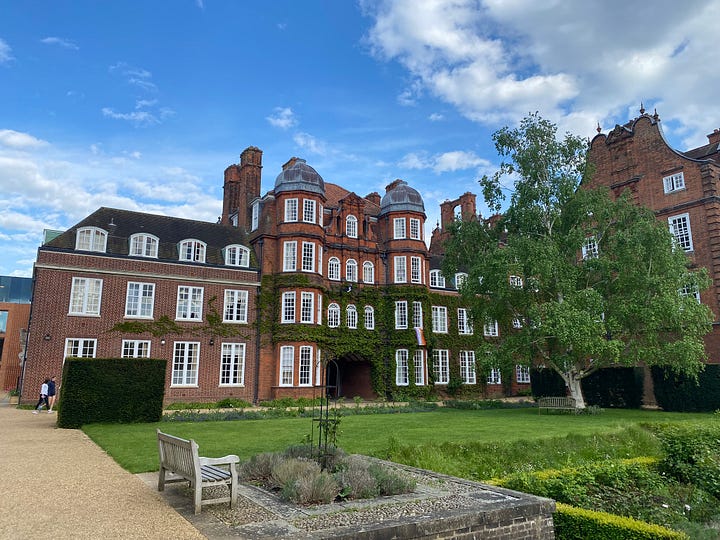
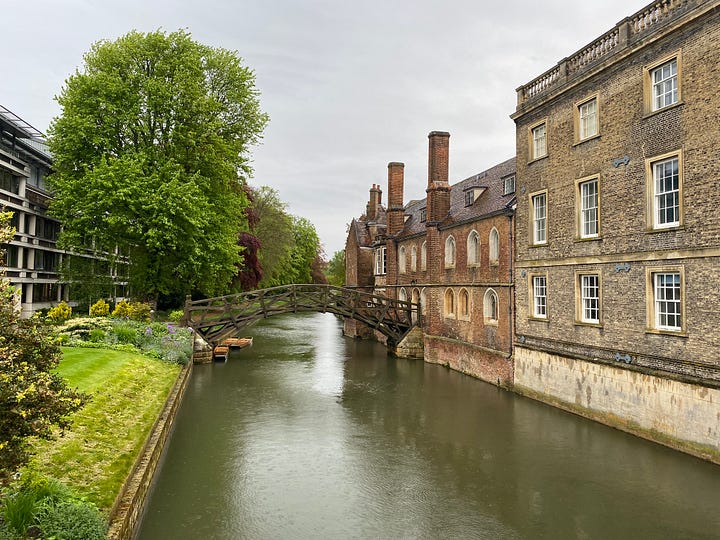
This morning I walked with friends along the Lower Cam to see the houseboats and swans and cow parsley and buttercups while we talked. As I’ve dedicated all my time this weekend to the jigsaw of meetups (with both people and places), I don’t have any new writing about Cambridge to share. But I have a whole archive of Cambridge jaunts on my old blog, The Cambridge Placebook, and exactly three years ago I wrote about the long cycle I took along the Cam towpath, well beyond the path I walked today, and into the Cambridgeshire countryside to Bottisham Lock.
Below are a few teasers; read the rest of the idyllic ride here.
May 2021
On Easter Sunday, a month ago now, my afternoon was wide open after Easter observances and the weather was perfect. So I opened Google Maps and consulted my map feelers—where I felt like being and where I could extend my exploration coverage—and decided on the direction of Jesus Green and Fen Ditton. No endpoint in mind, just a place to be and see where I ended up.
Well, I ended up seven miles down along the River Cam. The pull of the path was irresistible, and only a sense of daylight waning turned me back.
This journey will turn out be one of crisscrossing, chasing navigable paths.
The towpath: a well-packed dirt track hugging the River Cam, leftover from horse-drawn trade boat days, now a place for people—plenty of them today—to stroll.
I retrace the section of towpath I’ve seen before: meadows alternate with well-to-do cottages and beer gardens; houseboats and stately spring-green willows and blooming brush line the banks. The water is sky. People stroll. There are swans and ducks and coots. Fen Ditton’s medieval church tower is square above trees and rooftops.
Now the riparian brush is thick along the towpath but I spot fields beyond, and in them a slow scattering of roe deer. Short passenger trains are audible and frequent on tracks a field away. Occasionally I pass joggers and picnickers paused on the banks; a couple is cozied in the cradle of the big tree stump (they’re still there when I return). There are more houseboats, colorful and cozy, and another square church tower in the distance—Horningsea village.
A long, long draught of green and blue.
The towpath finally veers away from the river, no longer a towpath, at the dozen-building hamlet of Clayhithe. … The Cam once sent “clay from Clayhithe, eels from Ely, baskets from Fen Ditton, pottery from Horningsea” through the fens out to sea ports. Now it only “carries water from a thousand drainage ditches, working to keep the Fens dry” for the railroads and roads that took over from river transport, the acres of now-arable fields, and the booming, tech-driven development of Cambridge. It only leads fish and birds and humans through the fens and fields seaward. I’ll follow it a little further.
Read the full post for meandering meadows, bridges, locks, Roman canals, a map of the route, and a kingfisher flash.
The fringes and countryside of Cambridge, the Silicon Fen with its burgeoning population and skyrocketing property values, are another matter; whole developments have come into being since I left.




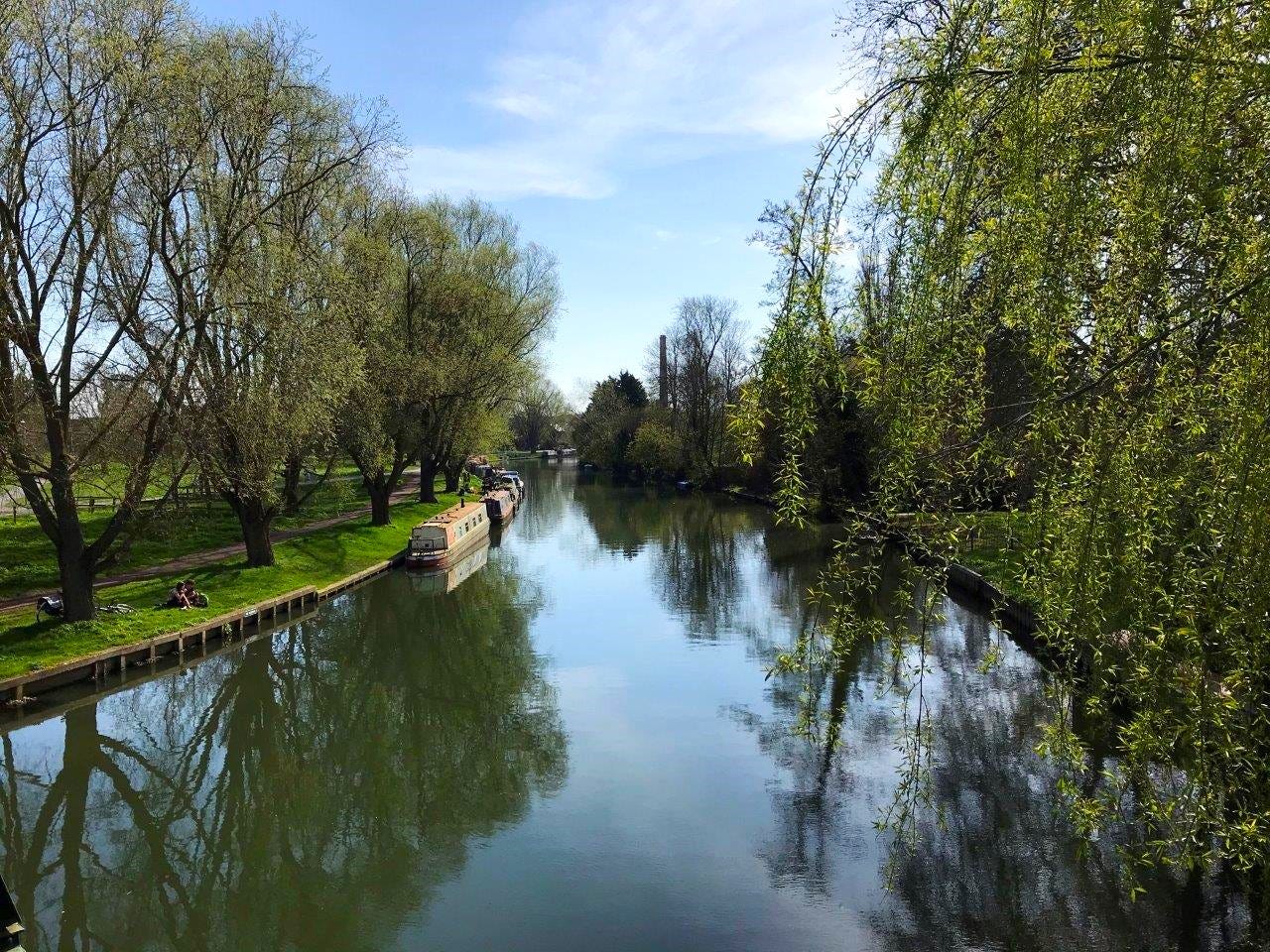


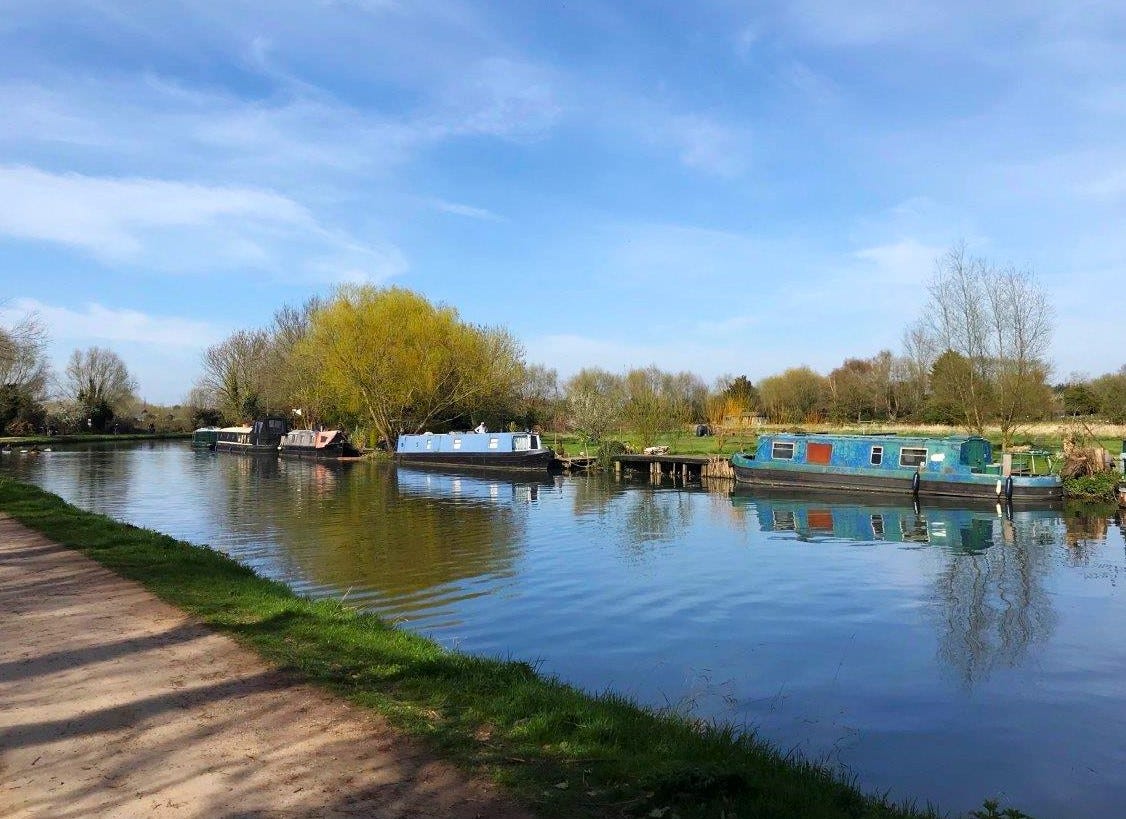



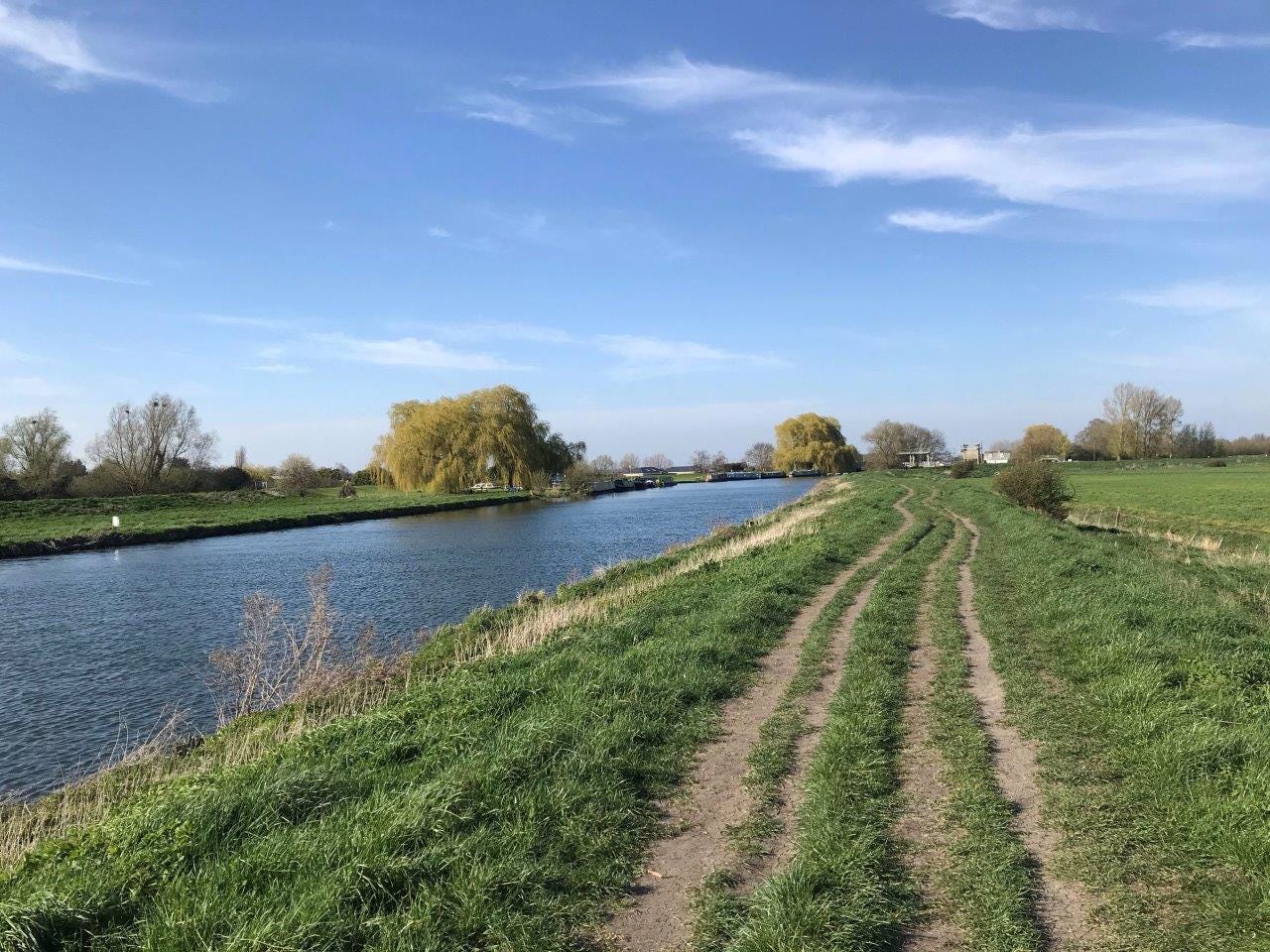
Glad you enjoyed it, Jeffrey!
Cambridge is a lovely town ... lived nearby for many years